Key takeaways:
- Strong passwords and the use of a password manager are essential for digital safety and peace of mind.
- Awareness of phishing scams and skepticism towards unsolicited messages are crucial to avoid compromising personal information.
- Regularly updating passwords and enabling two-factor authentication enhances security and protects personal data.
- Monitoring home network settings and connected devices helps prevent unauthorized access, ensuring a safer online environment.
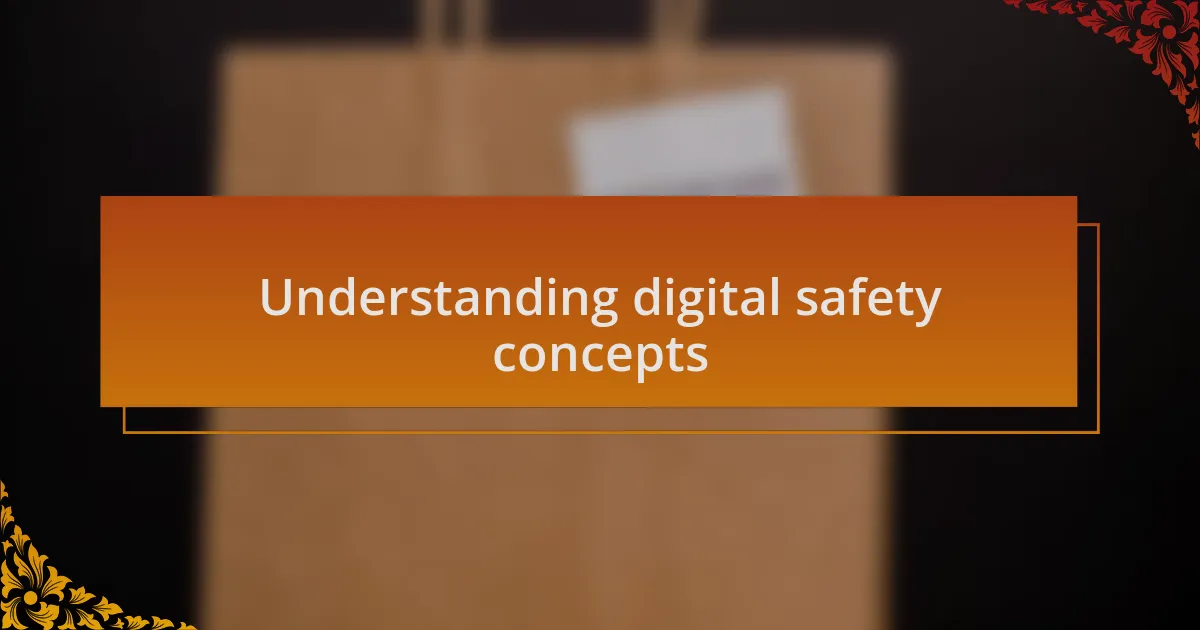
Understanding digital safety concepts
Understanding digital safety concepts begins with recognizing that the internet is a double-edged sword. I remember my first encounter with online banking; I was filled with excitement but also a nagging worry about my personal information. This experience made me realize that being proactive about digital safety is essential for peace of mind.
One crucial concept is the idea of strong passwords. Have you ever felt overwhelmed by the number of sites requiring different credentials? I once felt like I was juggling too many passwords, so I started using a password manager. Not only did it help me generate secure passwords, but it also relieved me from the anxiety of forgetting them, which made me more secure overall.
Another fundamental aspect is awareness of phishing scams. I’ll never forget receiving an email that seemed legitimate, claiming I’d won a contest. A moment of curiosity almost led me to click a link that could have compromised my accounts. This taught me that being skeptical and verifying sources before engaging online is critical. How often do we pause to question the authenticity of the messages we receive? Staying alert can save us from potential digital disasters.
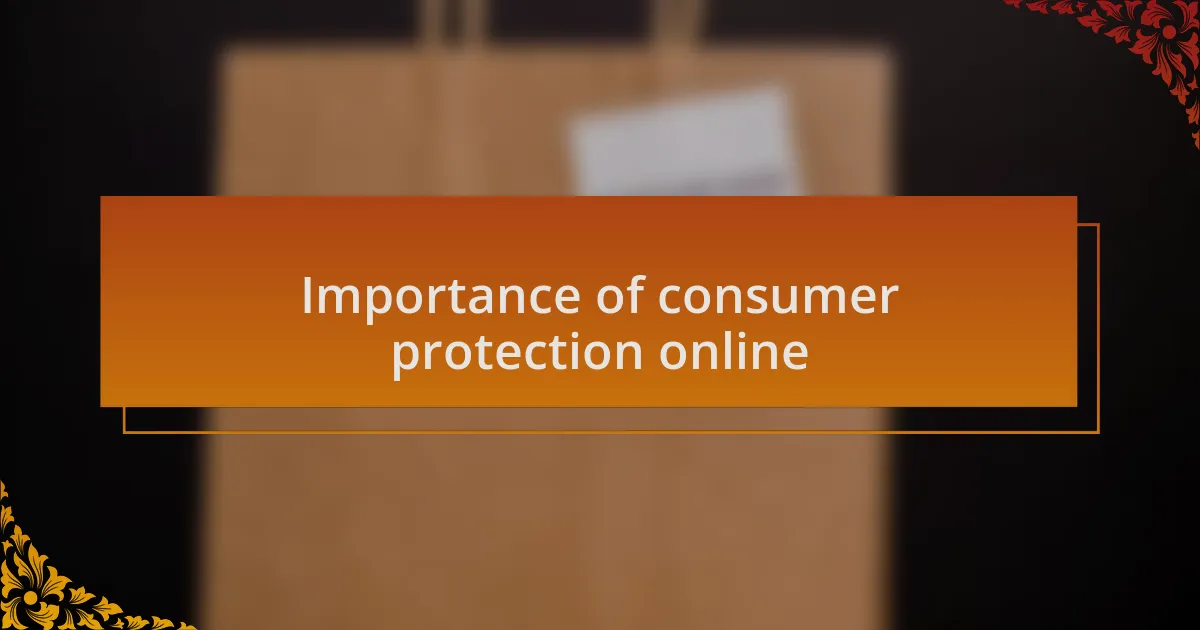
Importance of consumer protection online
Consumer protection online is vital because it safeguards not just our financial information but our identities too. I recall a friend who had her identity stolen after her data was leaked during a data breach. The emotional toll and hassle of rectifying that situation were immense, emphasizing how essential it is for consumers to be protected in the digital landscape.
Moreover, the rise of e-commerce has transformed the way we shop, but it also opens the door to risks. I remember purchasing a gadget online that turned out to be a scam; it never arrived, and getting a refund felt like pulling teeth. This experience reinforced my belief that robust consumer protection laws are critical in ensuring that online retailers are held accountable, making our online shopping experience safer.
Without proper consumer protection mechanisms, we risk losing our hard-earned money and peace of mind. Have you ever thought about the implications of sharing your personal data? I did when I decided to participate in an online survey; it was shocking how many details they wanted. This experience made me realize the importance of regulatory bodies that oversee how companies handle our data, providing an extra layer of security that we all need in today’s digital age.

Basic security measures for devices
One of the most effective basic security measures for devices is to always use strong, unique passwords. I learned this the hard way when my simple password was compromised, leading to unexpected access to my personal accounts. It was unsettling to think about how easily my information could have fallen into the wrong hands, highlighting the importance of investing a little time in creating complex passwords.
Enabling two-factor authentication (2FA) has become a must in my routine. The peace of mind I feel knowing that I’ll receive a text or an app notification every time there’s an attempt to access my accounts is invaluable. Have you ever considered how vulnerable your accounts might be without this extra layer? I did before I implemented 2FA and realized it’s a simple step to significantly boost my digital security.
Keeping software and applications updated is another essential measure I cannot stress enough. When I ignored an update notification once, my device became infected with malware shortly after. It was a wake-up call that taught me the importance of those seemingly minor updates, as they often include critical security patches that protect against emerging threats.
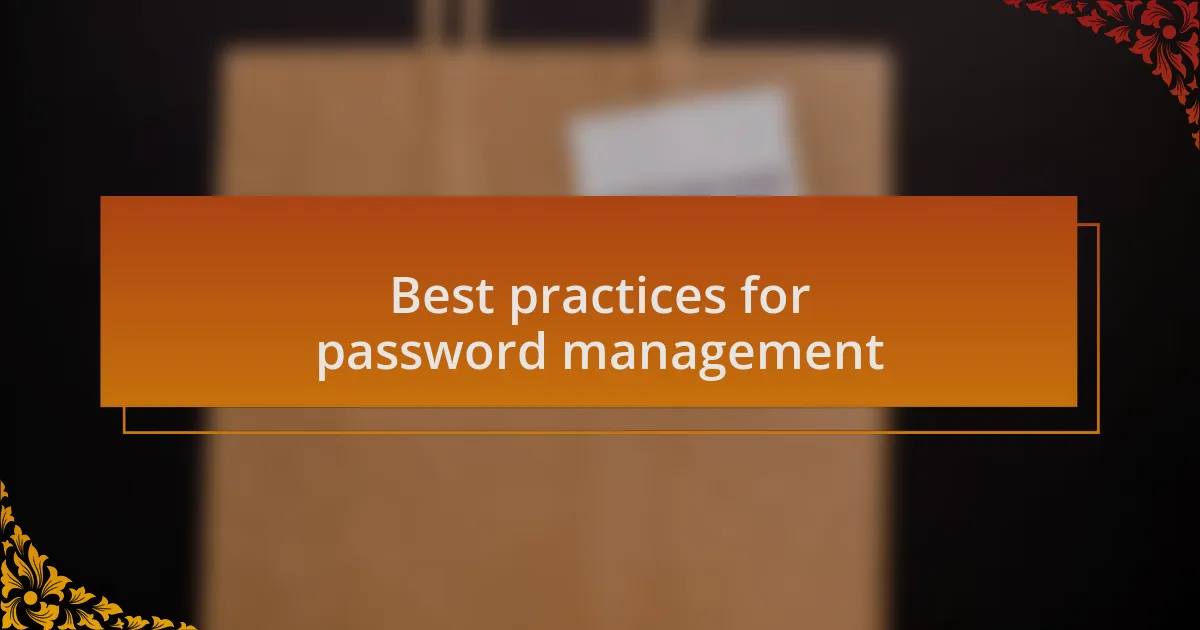
Best practices for password management
When it comes to managing passwords, I’ve found that using a password manager can be a game-changer. Initially, I was skeptical about storing my passwords in one place, but after trying it, I felt relieved. Imagine all those complex passwords I had scribbled down or forgotten! With a password manager, I no longer have to remember each one; I just need to recall one strong master password.
Another practice I highly recommend is regularly updating your passwords. Once, I clung to the same password for years until a data breach pushed me to rethink my habits. The anxiety that crept in as I realized my password might be in the wrong hands was unsettling. Now, I set reminders to change my passwords every few months. How often do you consider whether your passwords are still strong enough? It’s a simple routine that brings me peace of mind.
Lastly, avoid using easily guessable information in your passwords, like birthdays or pet names. I once made the mistake of using a nickname that friends often referred to me by. It seemed fun and harmless until I discovered how simple it was for someone to figure it out. By creating a password that combines random words, numbers, and symbols, I ensure it’s not only more secure but also far less predictable. What’s your password strategy? It’s worth re-evaluating for your digital safety.
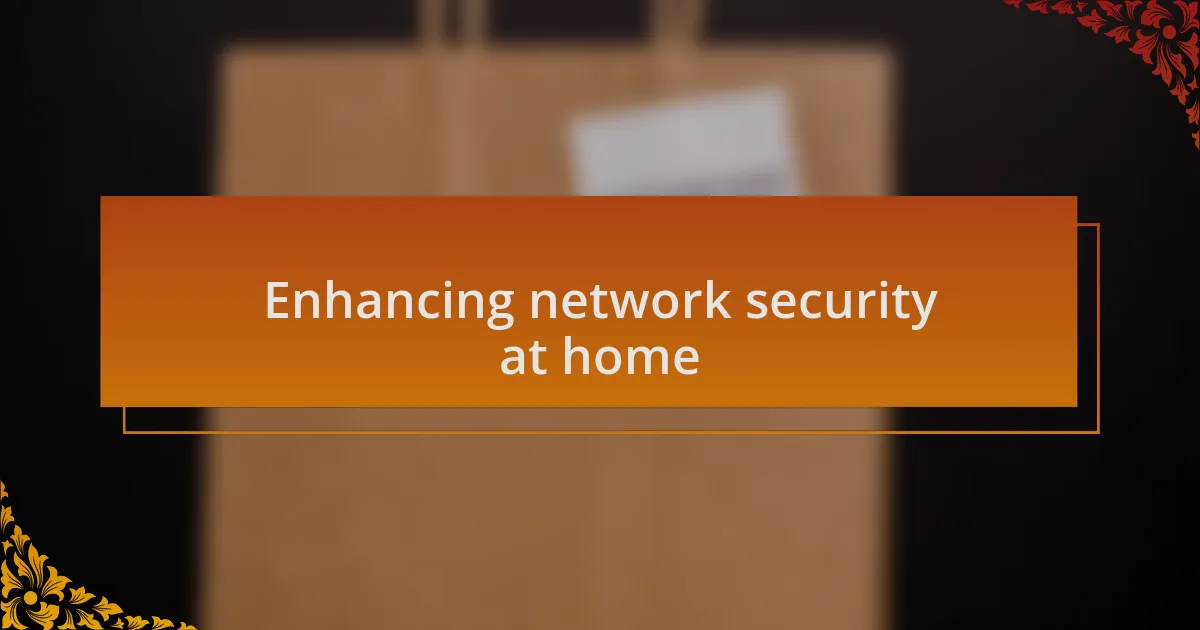
Enhancing network security at home
When I took the plunge into enhancing my home network security, one of the first changes I made was to update the default settings on my router. You might not realize how many vulnerabilities could lurk in factory settings, but I certainly did after a friend experienced a security breach. It’s a simple task that took only a few minutes but created a stronger barrier against unwanted access. Have you ever considered how many devices are connected to your internet at home?
Another effective measure I’ve embraced is enabling network encryption. I remember the unease I felt when I found out my neighbors could easily join my Wi-Fi network without my permission. By switching on WPA3 encryption, I not only secured my connection but also gained reassurance knowing that my online activities were more private. It’s surprising how something as straightforward as changing your encryption type can add an extra layer of security—have you checked your encryption settings lately?
Finally, regularly monitoring which devices are connected to my network has become a vital part of my routine. The first time I noticed an unfamiliar device logged on, my heart raced; it turned out to be a friend visiting with a smartphone. This experience taught me the importance of being vigilant. I now take the time to familiarize myself with my connected devices, ensuring that every single one is recognized and secure. How often do you review the devices connected to your Wi-Fi? It’s a small effort that can make a significant difference.
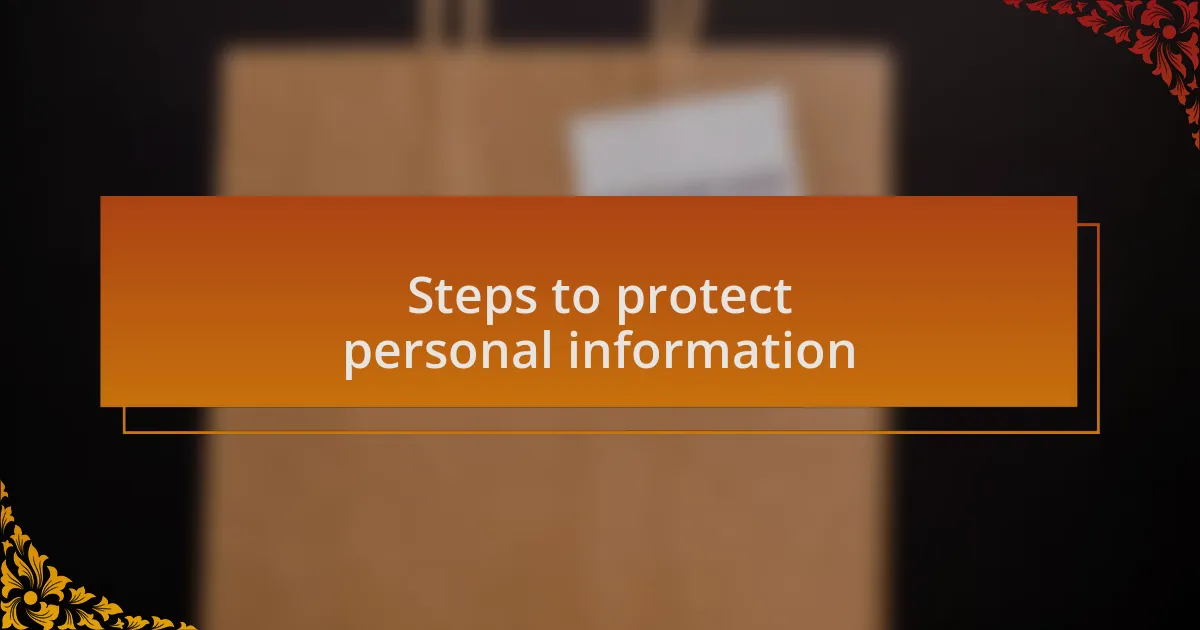
Steps to protect personal information
Taking steps to protect personal information begins with using strong, unique passwords for all of my accounts. I recall a time when I opted for a simple password, thinking it would be easy to remember. It wasn’t long before I realized how easily it could be guessed. Since then, I’ve employed a password manager to create and store complex passwords, ensuring I don’t fall into that trap again. Do you have a plan in place to safeguard your passwords?
Additionally, I make it a practice to enable two-factor authentication (2FA) wherever possible. The peace of mind I felt when my bank recommended this extra layer of security was immense. Now, even if someone manages to guess my password, they still need a second form of verification to gain access. It’s a small effort that results in big protection. Are you leveraging 2FA to secure your accounts?
Finally, I always think twice before sharing personal information online. I remember being caught off guard by a survey that asked for my birthday, address, and even my phone number. It seemed harmless, but I quickly realized how much unwanted exposure that could lead to. Now, I practice discretion and only provide information that is absolutely necessary. Have you considered what information you share online and its potential risks? Protecting your data starts with understanding what you give away.